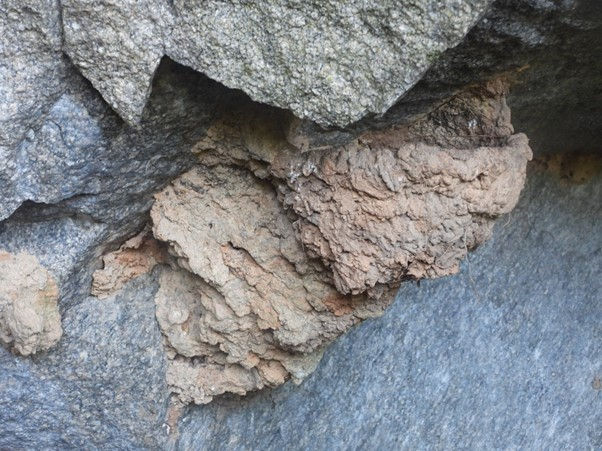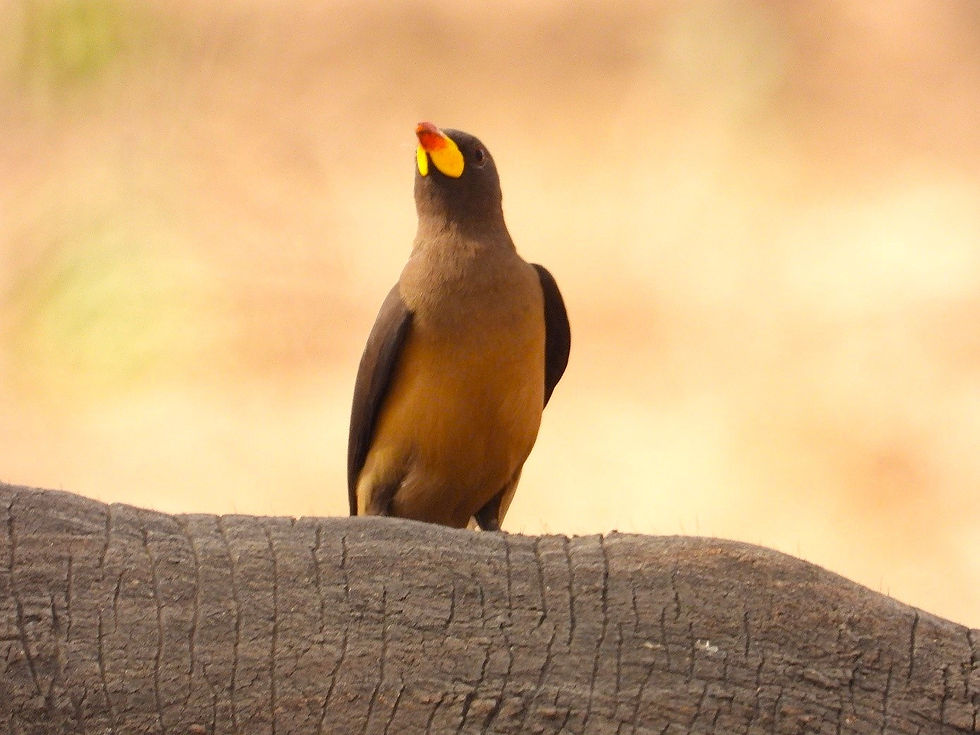Addressing challenges to African biodiversity conservation in Thiès, Senegal
- IBCP

- Sep 15
- 4 min read
15 September, 2025
By Saint Guillaume K. ODOUKPE

Abyssinian Roller (Coracias abyssinicus) in the Bandia Wildlife Reserve, Senegal. Photo by Saint Guillaume K. ODOUKPE.
With the support of IBCP, I participated at the first scientific conference of the CAMES Research Thematic Programme on Biodiversity, held from 17 to 19 June 2025 in Thiès, Senegal. The general topic of this conference was ‘Challenges of biodiversity conservation in the face of security issues in Africa’. It brought together 242 participants from nine countries in the CAMES region (Benin, Burkina Faso, Cameroon, Côte d'Ivoire, Guinea, Niger, Democratic Republic of Congo, Senegal and Togo) as well as the Comoros and Switzerland. The morning of the first day of the conference was devoted to the opening ceremony and the inaugural lecture on the theme "Biodiversity and food security in Africa: A vital link in the face of 21st century challenges," delivered by Professor Diégane DIOUF, Rector of the University of Sine Saloum El Hadj Ibrahima NIASS (USSEIN), Senegal. After the inaugural lecture, the afternoon of the first day and the entire second day of the conference were devoted to oral and poster presentations.

White-necked Rockfowl (Picathartes gymnocephalus) in the Lamto Scientific Reserve, Côte d’Ivoire. Photo by Saint Guillaume K. ODOUKPE.
I delivered my presentation on the second day of the conference. It was about “Preliminary data on the biology and ecology of a vulnerable bird species, Picathartes gymnocephalus (Temminck, 1825), and its conservation issues in a community forest in Lamto”. The White-necked Rockfowl Picathartes gymnocephalus is a vulnerable bird species due to the rapid decline in its populations and the loss of its habitat. In Côte d'Ivoire, the White-necked Rockfowl is mainly confined to protected areas in the west of the country. However, several decades ago, an isolated colony was discovered in the Lamto Scientific Reserve in central Côte d'Ivoire. This colony, although important, has been the subject of little scientific research.

Nest of the White-necked Rockfowl (Picathartes gymnocephalus) in Zougoussy Forest, Côte d’Ivoire. Photo by Saint Guillaume K. ODOUKPE.
To fill this gap, a study was initiated with the support of IBCP to find out more about the biology and ecology of the species and contribute to better conservation of its population in Lamto region. Data was collected between December 2023 and December 2024 using transects and camera traps near the species' nests. These methods enabled 21 individuals to be counted in the region, including 14 adults and 7 juveniles. This population of the White-necked Rockfowl is distributed both in the Lamto Scientific Reserve and in the surrounding area. However, they only breed outside the reserve, in a community forest in Zougoussy, a village bordering the reserve. The study of breeding ecology showed that the White-necked Rockfowl breeds twice a year on four sites containing huge rocks. More than twenty nests have been counted in these areas. The species lays 1 to 2 eggs in a nest made from sandy mud on large rocks.

Some conference participants in the Bandia Wildlife Reserve, including Saint Guillaume K. ODOUKPE on the far right. Photo courtesy of Saint Guillaume K. ODOUKPE.
Both parents incubate and raise the chicks at the same time. The chicks fly away 4 weeks after hatching. It has also been observed that several eggs have been subject to predation and some nests have been regularly inspected by poachers during the breeding period. Inclusive conservation measures involving local communities will make it possible to protect this mythical species, increase its population size and develop ecotourism activities in the region.

Saint Guillaume K. ODOUKPE and a giraffe in the background in the Bandia Wildlife Reserve, Senegal. Photo courtesy of Saint Guillaume K. ODOUKPE.
As a field excursion, we visited The Bandia Wildlife Reserve, which is a real ecological jewel in the crown of Senegal. The Bandia wildlife reserve has succeeded in reintroducing much of the marvellous native flora and of some of Africa’s best loved animals. Many of which had gradually disappeared, some of them centuries ago, due to demographic pressure and poaching. In addition, we observed many incredible birds like the Long-tailed Glossy Starling.

Long-tailed Glossy Starling (Lamprotornis caudatus) in the Bandia Wildlife Reserve, Senegal. Photo by Saint Guillaume K. ODOUKPE.
At the end of the conference, several recommendations were made. For participants, it was recommended to establish structured, functional and accessible national and regional databases on biodiversity, to establish national and regional seed and gene banks and finally to strengthen scientific research on national and regional biodiversity issues related to security. We recommend, through various high-level meetings with the governments of member states, CAMES must emphasise the need to:
Strengthen scientific research synergy on national and regional biodiversity issues related to security;
Strengthen the involvement of scientists in the implementation of biodiversity conventions in countries;
Promote collaboration between universities, research institutions, and other state structures for the completion of tasks related to biodiversity in countries;
Strengthen synergy between scientists and policymakers for better integration of biodiversity issues into development policies;
Strengthen mechanisms for financing biodiversity research, promoting and disseminating research results.
This conference was a great opportunity to meet and discuss with others African conservationists. I sincerely thank IBCP for fully supporting my participation.

Yellow-billed Oxpecker (Buphagus africanus) in the Bandia Wildlife Reserve, Senegal. Photo by Saint Guillaume K. ODOUKPE.




Comments